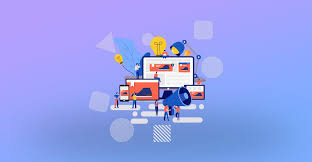Introduction
The evolution of software development has entered an era driven by intelligence, automation, and adaptability. Organizations are now moving beyond traditional lifecycle models to embrace the AI SDLC Framework, an innovation that merges artificial intelligence with every stage of the Software Development Life Cycle. This framework doesn’t just optimize code creation—it transforms planning, testing, deployment, and maintenance into an intelligent, self-improving process.
The first step in this transformation begins with adopting the AI SDLC Framework, which enables enterprises to bridge human creativity with machine efficiency for seamless and agile software delivery.
Intelligence at the Core of Software Development
In conventional SDLC models, every phase—requirements, design, coding, testing, and maintenance—relies heavily on manual processes. This often leads to delays, miscommunication, and human errors. The AI SDLC Framework introduces adaptive learning algorithms and predictive modeling to streamline these tasks.
Through real-time analytics, the framework provides insights into development trends, detects anomalies early, and automates repetitive tasks like bug detection and documentation. This allows teams to focus on innovation while maintaining high-quality code delivery.
By embedding intelligence into the development cycle, organizations move toward a more proactive, data-driven model where efficiency and accuracy coexist naturally.
Harnessing Full Stack SDLC Automation
Modern enterprises require software systems that can scale effortlessly across platforms, integrate multiple technologies, and adapt to rapid changes. Full Stack SDLC Automation empowers teams to automate each layer of the stack—from front-end design to backend services and cloud deployment.
Instead of isolated automation in testing or CI/CD, full-stack automation brings unified orchestration across the entire pipeline. It eliminates manual intervention in repetitive tasks like build management, regression testing, and version control.
This integration ensures continuous delivery, faster iterations, and improved collaboration between development, operations, and business teams. Ultimately, it turns the SDLC into a dynamic ecosystem capable of self-monitoring and self-optimization.
Accelerating Modernization with Enterprise AI Code Migration
Legacy systems continue to challenge organizations aiming to keep pace with technological advancements. Here, the Enterprise AI code migration tool plays a pivotal role. It simplifies the complex process of migrating legacy codebases to modern architectures using AI-driven analysis and refactoring techniques.
This tool identifies redundant or outdated modules, optimizes them, and automatically transforms legacy logic into contemporary code frameworks. Combined with the AI SDLC Framework, enterprises can achieve modernization without risking data loss or performance issues.
By automating migration, companies preserve their intellectual assets while aligning their infrastructure with future-ready technologies—a critical step toward long-term digital sustainability.
Transforming Legacy Systems with AI-Powered Conversion Tools
Legacy systems often hold years of valuable data and business logic but are confined by outdated programming languages and frameworks. The AI legacy Conversion tool enables organizations to breathe new life into these systems.
Using natural language processing and code understanding algorithms, this tool interprets legacy code and translates it into modern programming languages. It ensures that core business functionalities remain intact while introducing compatibility with newer cloud and microservice environments.
Beyond simple translation, the AI-driven approach also improves system architecture, enhancing scalability and performance. This tool stands as a cornerstone for enterprises aiming to achieve modernization without costly manual redevelopment.
Empowering Enterprises with Agentic Legacy Modernization Tools
The term “agentic” refers to systems that operate autonomously, making context-aware decisions. Agentic legacy modernization tools embody this principle by integrating self-learning agents into modernization workflows.
These tools can independently analyze code dependencies, optimize performance, and identify hidden vulnerabilities during migration. Over time, they adapt based on previous transformations, improving the quality and accuracy of future conversions.
The introduction of agentic intelligence allows enterprises to transition from static modernization strategies to dynamic, self-adjusting systems that evolve with changing technological environments. It’s not just about modernization—it’s about continuous transformation.
Unifying Development and Modernization Under One Intelligent Framework
When the AI SDLC Framework is integrated with automation and modernization tools, enterprises gain a holistic ecosystem that interconnects development, testing, and migration. The framework ensures that AI not only supports but orchestrates every stage of the lifecycle.
-
Development cycles shorten as machine learning models suggest optimized design paths.
-
Testing phases accelerate through AI-powered predictive testing models.
-
Deployment becomes smoother with autonomous orchestration and rollback capabilities.
-
Maintenance evolves into proactive prevention through self-healing code modules.
This interconnected environment minimizes technical debt while maximizing agility, helping businesses adapt rapidly to market demands and security challenges.
Human-AI Collaboration in Software Delivery
While AI automation takes over repetitive and analytical tasks, the human element remains irreplaceable. Developers, analysts, and engineers provide creativity, strategic decision-making, and contextual understanding. The AI SDLC Framework complements this by handling data-driven execution, allowing human teams to focus on innovation.
This synergy between humans and AI fosters a productive ecosystem—one where decision-making is informed, workflows are optimized, and development time is reduced. As enterprises grow increasingly complex, this hybrid approach ensures both speed and sustainability in software delivery.
A Future-Ready Approach to Continuous Evolution
In a world where digital demands evolve by the minute, the AI SDLC Framework ensures long-term resilience through continuous learning. Its predictive algorithms monitor performance, detect inefficiencies, and recommend future improvements—turning the development process into a living, evolving entity.
Organizations adopting this model can continuously update their codebases, integrate emerging technologies effortlessly, and maintain compliance standards without manual reconfiguration. The outcome is a future-ready enterprise equipped for sustained innovation.
Conclusion
The AI SDLC Framework marks a turning point in how enterprises conceptualize, build, and evolve their software systems. By integrating automation, modernization, and intelligence, it transforms the software lifecycle into a self-learning, adaptive process.
From leveraging the Enterprise AI code migration tool for modernization to employing the AI legacy Conversion tool for transformation and utilizing Agentic legacy modernization tools for autonomy—each component contributes to an ecosystem where development becomes more intelligent, agile, and future-proof.
The AI SDLC Framework doesn’t just modernize software; it modernizes the mindset of software development itself, setting the foundation for a smarter, continuously evolving digital world.
Have Questions? Ask Us Directly!
Want to explore more and transform your business?
Send your queries to: info@sanciti.ai

